Hello folks, it’s Tim and Henrietta again! Last time we were writing about some of the details and plans around our cycle trip from India to Turkey. Now we are six weeks into the trip and have just crossed our first land border from India to Pakistan. In this post we will give you some highlights of our time in India, along with a bit of a How To guide for cycle touring in this vibrant and diverse country.
Our Route So Far
We rode around 1500 miles in India, and took three trains. We started in Bangalore in mid July and in around two weeks rode from Bangalore to Goa via the beautiful village of Hampi. The rain in Goa swamped us (see our last post) and prompted a train ride from Goa to Ahmedabad with a wonderful one-week stopover in Mumbai. From Ahmedabad we crossed the states of Gujarat and Rajasthan, heading in a largely northerly direction and ending up at the awe-inspiring Taj Mahal in the southern corner of Uttar Pradesh. The heat got to us in northern Rajasthan and Uttar Pradesh, and we realised we needed to head towards the mountains of Pakistan and Tajikistan before winter hit, so we caught another train from Agra to Amritsar. Our route had us take a mixture of National Highways, State Highways and occasionally, some tiny back roads that weren’t marked on our map or GPS! Now we are writing from Lahore in Pakistan, after having ridden our bikes across the Attari-Wagah border a couple of days ago.
Accommodation – Dos and Don’ts
Accommodation in India is very easy to find. Hotels are plentiful, as too are friendly and extremely hospitable people. We used a mixture of accommodation styles on our ride, listed below.
Hotels
One of the obvious choices. We stayed in hotels in touristy areas or when we were really tired/hot/wet from the days riding. Finding a place to keep our bicycles out of reach and sight was sometimes tricky, and often we would keep the bikes in our room. Failing that, some places have underground parking where we locked the bikes. Be warned, if your bikes are left in view they will be fiddled with; though it’s never anything menacing or malicious. Indian people are just very curious, especially towards a foreign bicycle with strange brakes and gear levers.
Dhabas
Dhabas, which we mentioned in our last post, are roadside truck stop restaurants where truck drivers will stop for a feed and will often rest the night. We had some amazing experiences rolling into these places and motioning that we also wanted to stay. Most times we would look for a quiet dhaba with a nice, discrete grassy patch for us to put our tent (grass is sometimes hard to find though, so be prepared for rocky, gravelly ground as well). Communicating our intentions was a little tricky sometimes; on one occasion we motioned to a patch of grass next to the dhaba only to be shown to the dhaba rooftop! Mind you, this meant we had a stunning, if unconventional vista from the tent that evening. Another great feature of dhabas is their large concrete troughs for washing. Women are few and far between at these stops, but Henrietta still felt comfortable enough to wash in shorts and singlet. On one occasion, to the delight of all parties involved, she was actually blasted with water from a two-inch wide poly pipe hose by one dhaba owner who felt she needed some help!
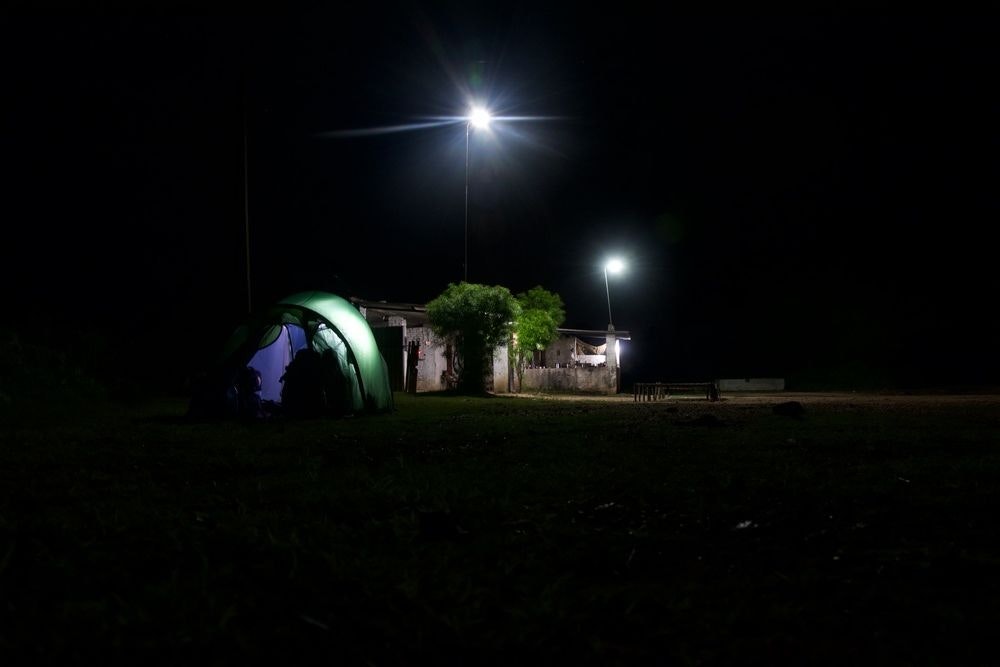
Our tent pitched beside a beautiful, quiet dhaba in Rajasthan. The owner insisted we eat a home-cooked meal with his family instead of the dhaba fare. A very humbling experience.
Camping
Camping possibilities vary across India. We didn’t go to the mountains, but have heard that camping is much easier there than in the more populated south and central regions we cycled in. When we left quite a few people told us it would be impossible to camp in India because of the population density. Well, now we can heartily disagree! Camping is indeed possible, and will likely give you some of your most memorable experiences cycling here.
Our camping experiences generally involved the dhabas (see above), but a few times we pitched our tent in small villages or in the yards of friendly locals. The most salient advice we can give for camping is; if at all possible, always ask permission. We successfully ‘wild-camped’ only once, on the edge of a jungle near the border between Karnataka and Goa. We tried wild camping very early in our trip (the second night of riding) and the experience wasn’t a great one. We found a great little spot nestled amongst boulders and trees, well hidden from the road and in what we thought was a national forest reserve. Come dusk, just as we were cooking some rice, two villagers found us and made it very clear that we were camping on their land. They weren’t happy, and without any common language we were unable to convince them to let us stay the night. We hastily packed our things and rode in the rapidly darkening sky to the next town. From then on we decided that we would always try to ask permission before pitching our tent. Now, we don’t want to leave you with a bad view of camping in India, so we’ll now recount one of our most treasured camping experiences in India.
In Rajasthan we cycled a wonderfully quiet state highway that connects Bilwhara to Jaipur. We had ridden around 95 km on this particular day and the sun was sitting low in the sky so we were looking for a place to sleep. We pulled over at a small temple on the edge of a tiny village and asked some locals if we could pitch our tent in the temple grounds that evening. They quickly showed us to the grounds of the local primary school, saying it would be much safer to stay there. We started to set up for the evening and were soon surrounded by half of the village folk, who were delightfully inquisitive about our tent, multi-fuel hiking stove and heavy-duty touring bikes. They all gathered to watch us cook dinner and helped chop vegetables, brought us milk (fresh from the cow!) and even tried some of our food (though this took some hard coaxing from us, as in rural Indian culture the guest always eats first). Before they left for the evening we had given our word to visit the village the next morning for chai and breakfast. Needless to say, the food and chai was amazing and walking through the village gave us a fascinating insight into the way of life in these very rural communities. The hospitality of the people of India will mostly blow you away, we were often invited to visit their houses, stop for chai, eat breakfast/lunch /dinner or just to chat.
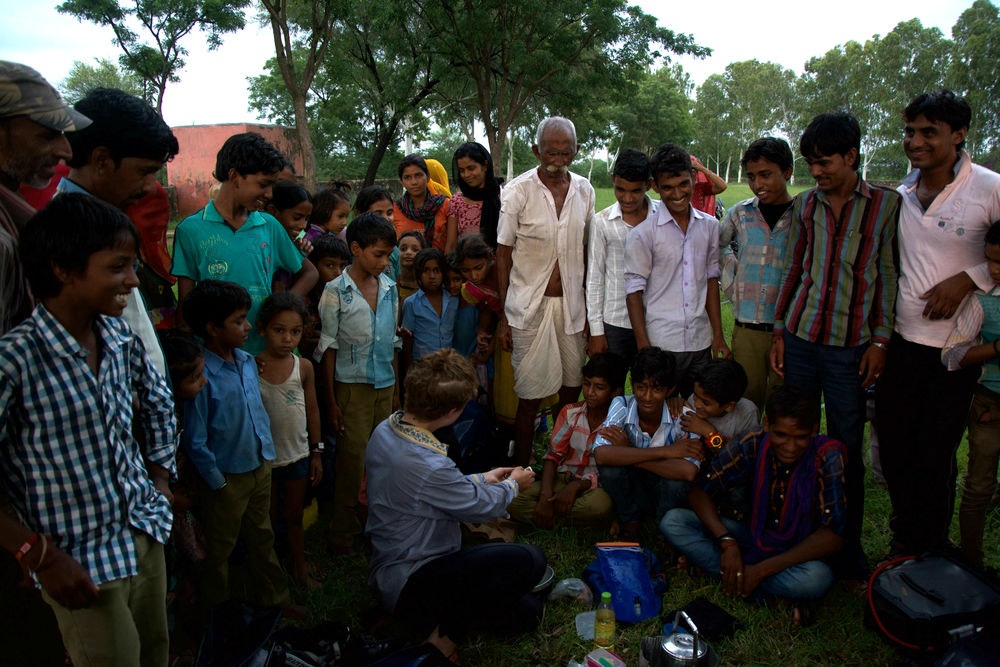
We gave an impromptu cooking demonstration to a crowd of villagers at a local school in Rajasthan.
Hosting
We had two kinds of hosting experiences in India; Warmshowers hosts (which we mentioned in our last post, so won’t go into here) and people we met on the road. A few weeks back, while cycling along a barren National Highway in the brutal heat Tim was stopped by a delightful young woman, Satyem, and her brother who wasted no time in offering for us to stay at her family’s home that night. Her home was in the exact direction we were headed, and she was so disarmingly generous that we accepted. That evening was a wonderful one; Henrietta and Satyem really bonded, and Tim got a good chance to use our Hindi phrasebook with Satyem’s father.
Food & Water
The best part about cycling here! With the long distances we cover each day our appetites have become voracious, to say the least. Fresh fruit stalls are plentiful as are numerous kinds of snack stalls selling many a deep fried veggie treats, so we never went hungry. We’ve certainly challenged the “steer clear of street food” travel advice, and have only been sick once. Largely we’ve found street food to provide delicious little interactions with locals that we highly recommend. With 40% of Indians not eating meat, being vegetarian has not been an issue here. Many small restaurants even have ‘Vegetarian Restaurant’ written on a sign out the front. We are anticipating a little more difficulty in the sheep farming regions of central Asia…
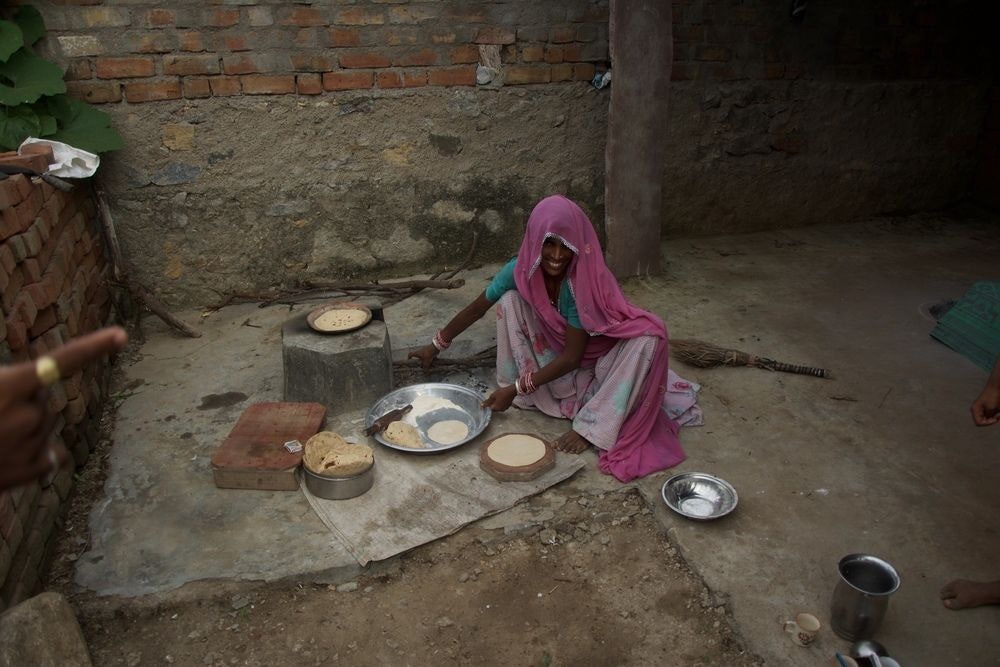
One of our Indian food highlights, a home-cooked meal in a tiny village in Rajasthan.
Water in India is probably most often the culprit for “Delhi Belly” and travelers are advised to drink mineral bottled water to avoid contracting waterborne illnesses. We are both quite environmentally conscious, and always avoid buying bottled water back home in Australia, so the idea of continually buying bottled water in India and therefore contributing to India’s immense waste problem wasn’t all that appealing. However, we also didn’t want to be sick from local water all the time! Luckily we found some ways around this problem. At large petrol stations and roadhouses there are often reverse-osmosis water filtering machines, which is basically the process that is used for bottled water anyway. Between us we have capacity to carry 7L of water, so stopping at these stations would give us enough water for the day. It’s also a great little money saver; while water is cheap here (around 25 rupees per 2L (about 60 cents Australian), the cost still adds up if you’re drinking 3 – 4 L per day. We didn’t bring a water purification system with us, so still had to buy bottled water in the more rural areas. If we travelled again in India we would bring along a portable water filter for these more remote area.
Indian Traffic
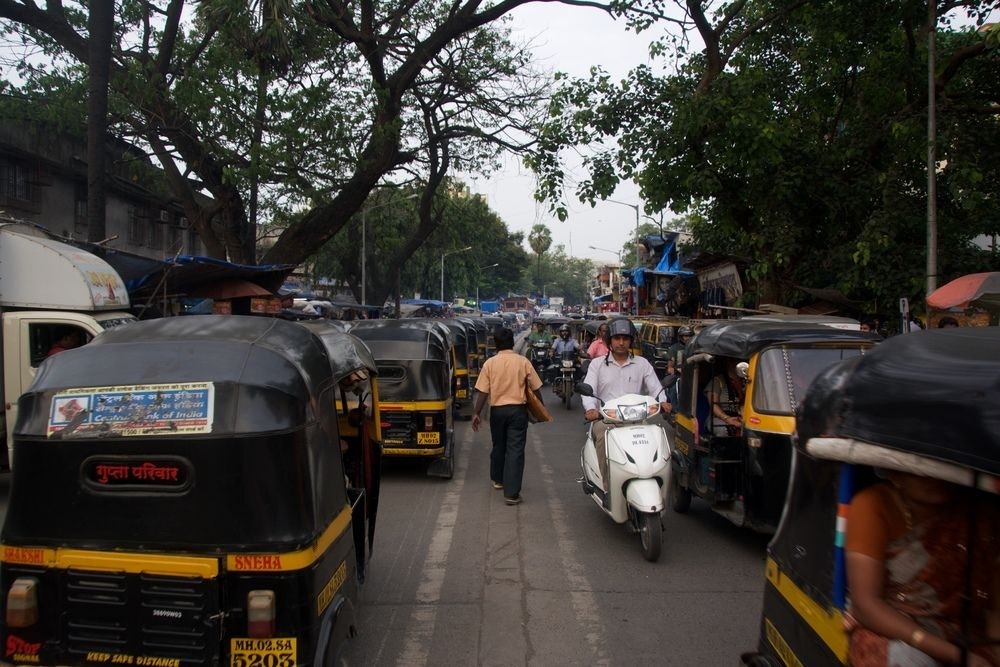
The streets of downtown Mumbai are known for their heavy traffic. Believe it or not, it’s still very navigable on a bicycle.
See also: Riding the highest road in the world, on a tandem bike...
The mayhem of Indian traffic is one last topic worthy of noting. Warned by many that it would be almost impossible to cycle in Indian cities, and a sure death sentence on the major highways - we have to dispel this myth. Our first two weeks in India were a time where we cautiously learnt from road users around us. Make no mistake, the traffic works in very different ways to in Western countries, but it is by no means un-navigable. The main thing to understand is that Indian traffic works on a trust system – you merge when you need to, trusting that the oncoming traffic will swerve around you, which it invariably does. You slow down trusting that the traffic behind you will slow too, you signal with copious use of horn/bell to someone you intend on passing and trust that they will do the same to you. And amongst what initially looks like disorganized chaos there is rhythm and rules, you just have to get your eyes and ears in tune to what those are. The added benefit to cyclists in India is that India has one of the largest cycling populations in the world; motor traffic are very familiar with the treadly fellows of the road, so we never felt in danger of not being seen. At the end of six weeks in India we postulated that perhaps cycling in the South East suburbs of Melbourne was in fact more dangerous than the Indian road ways, mostly due to the attitudes towards cyclists in both locations.
Namaste, and we will write again soon from neighboring Pakistan.
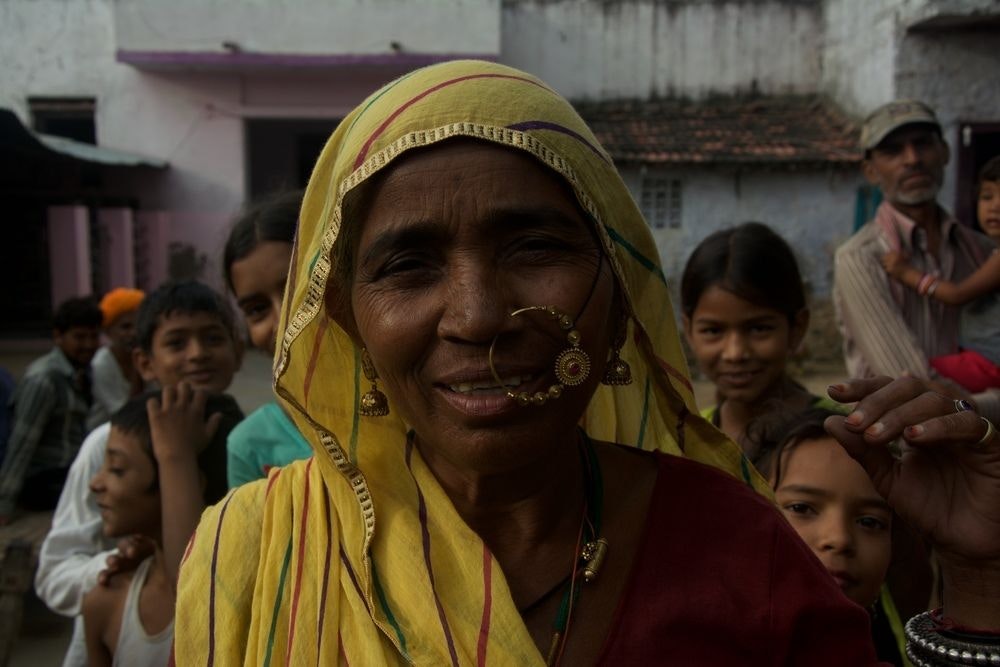
Keep up with news, reviews, interviews and more - follow us on Facie or subscribe to get our regular email





